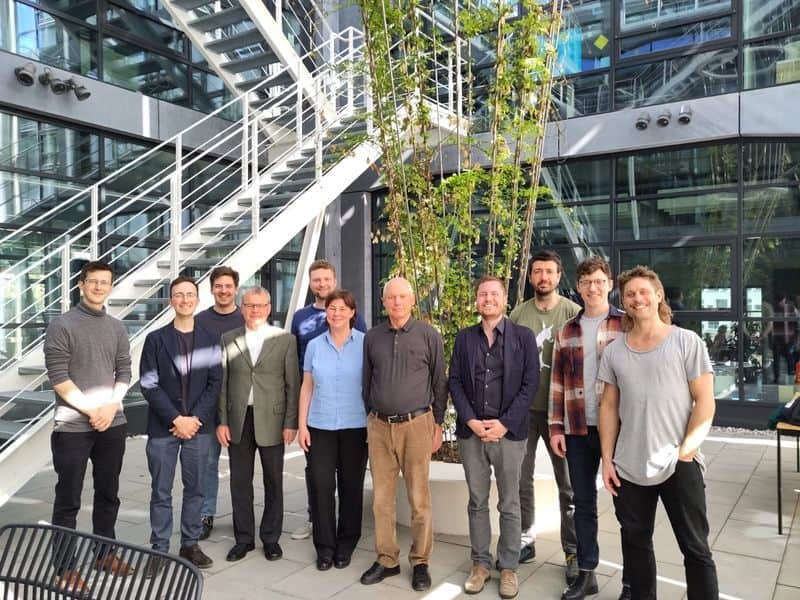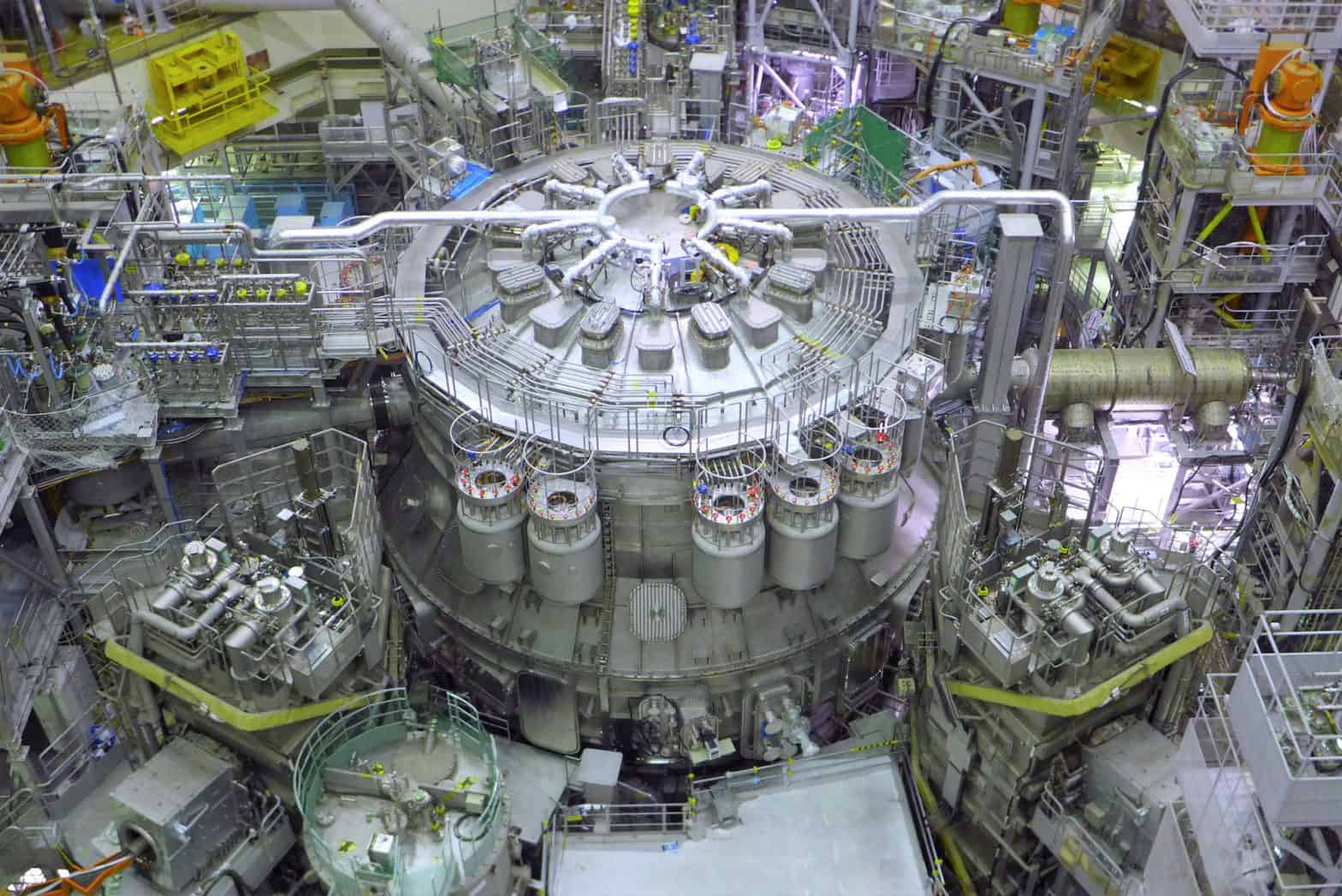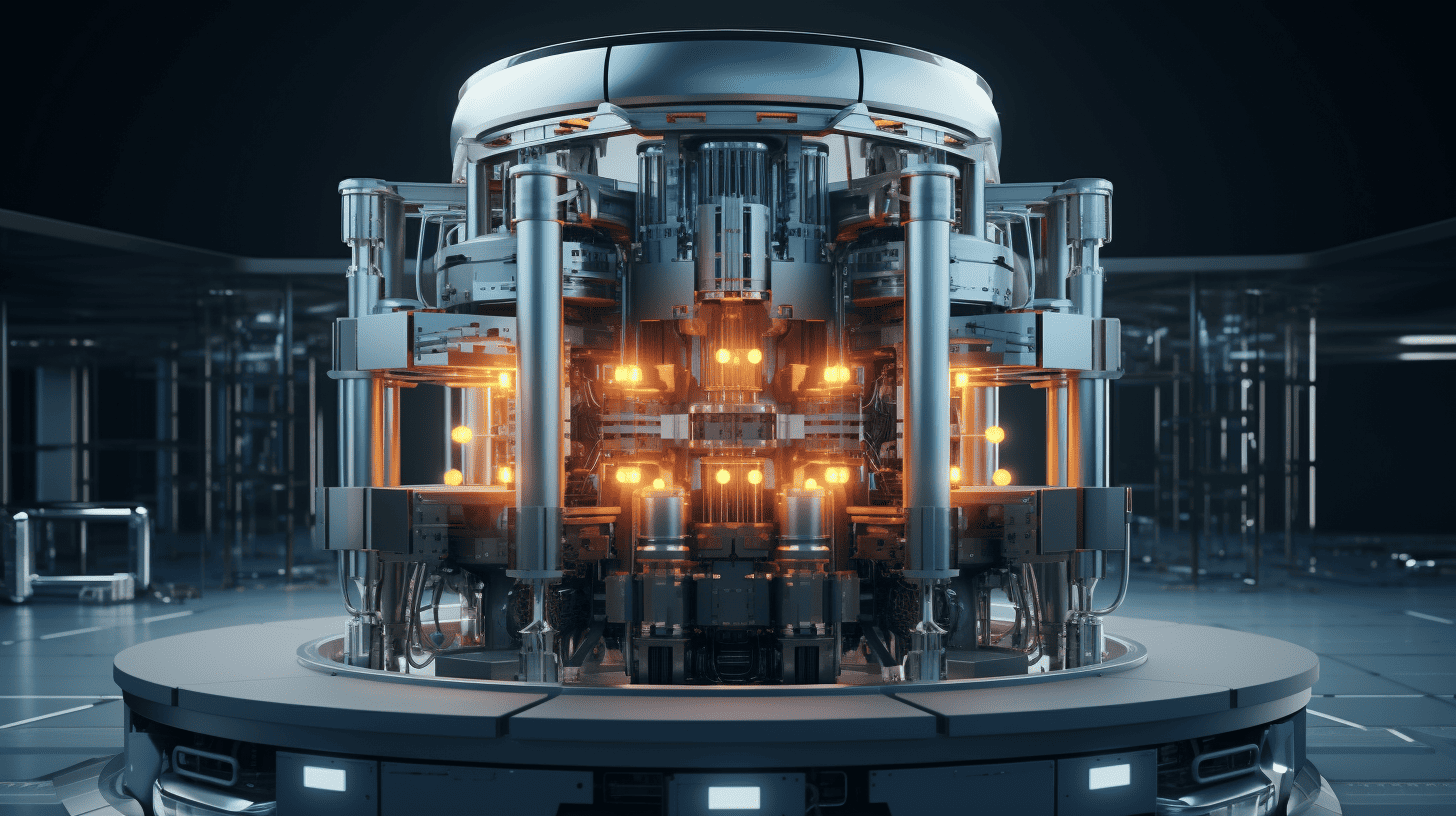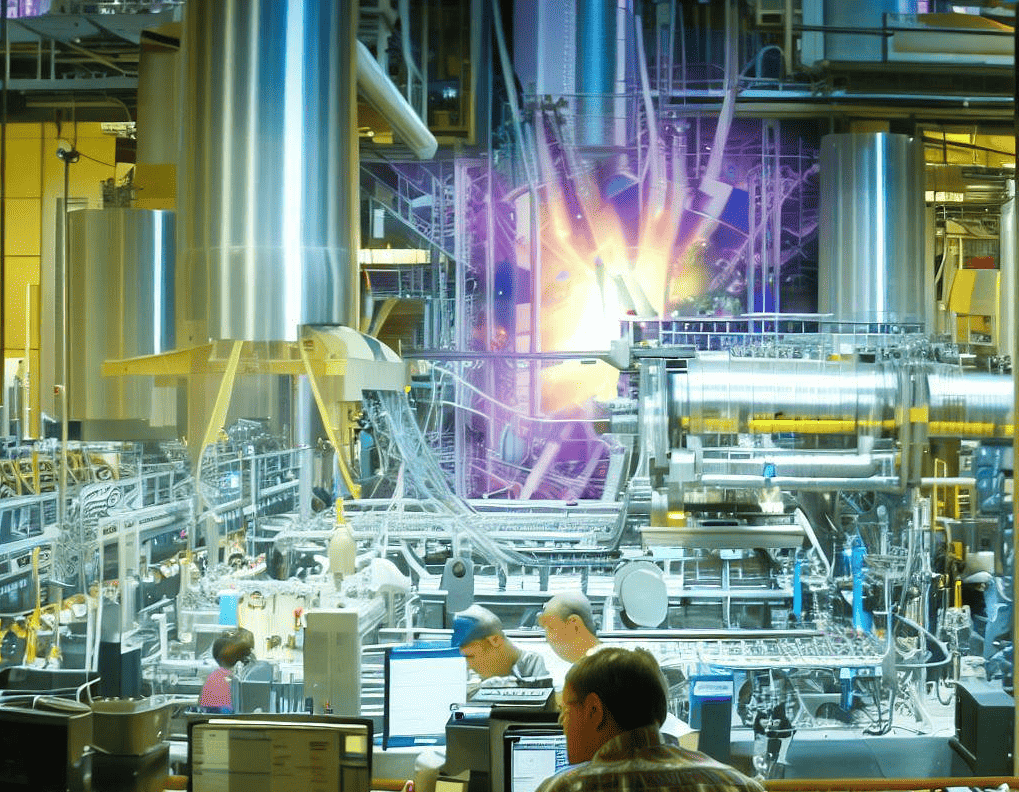
Renaissance Fusion, a Grenoble-based start-up, aims to decarbonize energy production with nuclear fusion technology. As announced earlier this year, the company raised 15 million euros in funding from investors such as Lowercarbon Capital, Positron Ventures and Norrsken VC. By the 2030s, Renaissance fusion ambitions a nuclear fusion reactor with a capacity of 1 gigawatt, enough to power a million households. Quite a task, as atomic fusion, is yet to be an economically viable energy source.
- Renaissance Fusion, aims to decarbonize energy production through nuclear fusion technology;
- The company focuses on the Stellarator reactor, which uses a magnetic field for fusion reactions.
A short physics lesson
First of all, what exactly is nuclear fusion? The name says it all: nuclear fusion occurs when atomic nuclei fuse. In the typical situation, atomic nuclei repel each other because they are positively charged. Fusion happens when the atomic force becomes stronger than the electromagnetic force. This reaction takes place only under very high temperatures and high pressure. The high temperature causes molecules to move from the gas phase into a mixture of freely moving atomic nuclei and electrons. In physics, this is called ‘plasma’; a state of matter different from solids, liquids, and gases.
In the universe, this process takes place continuously. The intense heat from the sun causes hydrogen atoms to fuse to form helium. To illustrate the immense power that is released: the reaction produces enough energy for the sun to burn.
Lots of potential, very complicated
It would be helpful if we could make this process happen on Earth in a controlled way. The fusion process could generate four times more energy per kilogram of fuel than nuclear fission and almost four million times more energy than burning oil or coal. Unlike current nuclear reactors relying on nuclear fission, fusion reactors are intrinsically safe and produce minimal radioactive waste.
Now for the kinks: generating nuclear fusion is a complex process. It has been worked on since the 1940s, and the breakthrough is (still) pending. At present, there are three ways to extract electricity from nuclear fusion.
1. Laser Fusion: Here, a capsule is compressed to very high pressure by potent lasers. The drawbacks: For 1kWh of plasma, 100 kWh of laser fusion is needed. So, it’s not cost-effective. In addition, these lasers are pulsed, meaning they have a low repetition rate.
2. Tokamaks. This reactor currently comes closest to cost-effective energy from nuclear fusion. It is a torus-shaped device in which plasma is kept in check using strong magnetic fields. Among others, the nuclear fusion reactor ITER at the Eindhoven institute DIFFER is built around a tokamaks. The drawbacks: those devices are also pulsed and the current circulation in the plasma makes it unstable.
3. Now the reactor that Renaissance Fusion is betting on : the Stellarator. Like the Tokamaks, it uses a magnetic field to generate a reaction. The big difference is that no current is required in the plasma, which makes the reactor easier to operate, requires less energy, and the process is stable rather than pulsed. The only drawback is the manufacturability of the magnets due to their complex 3D shape.

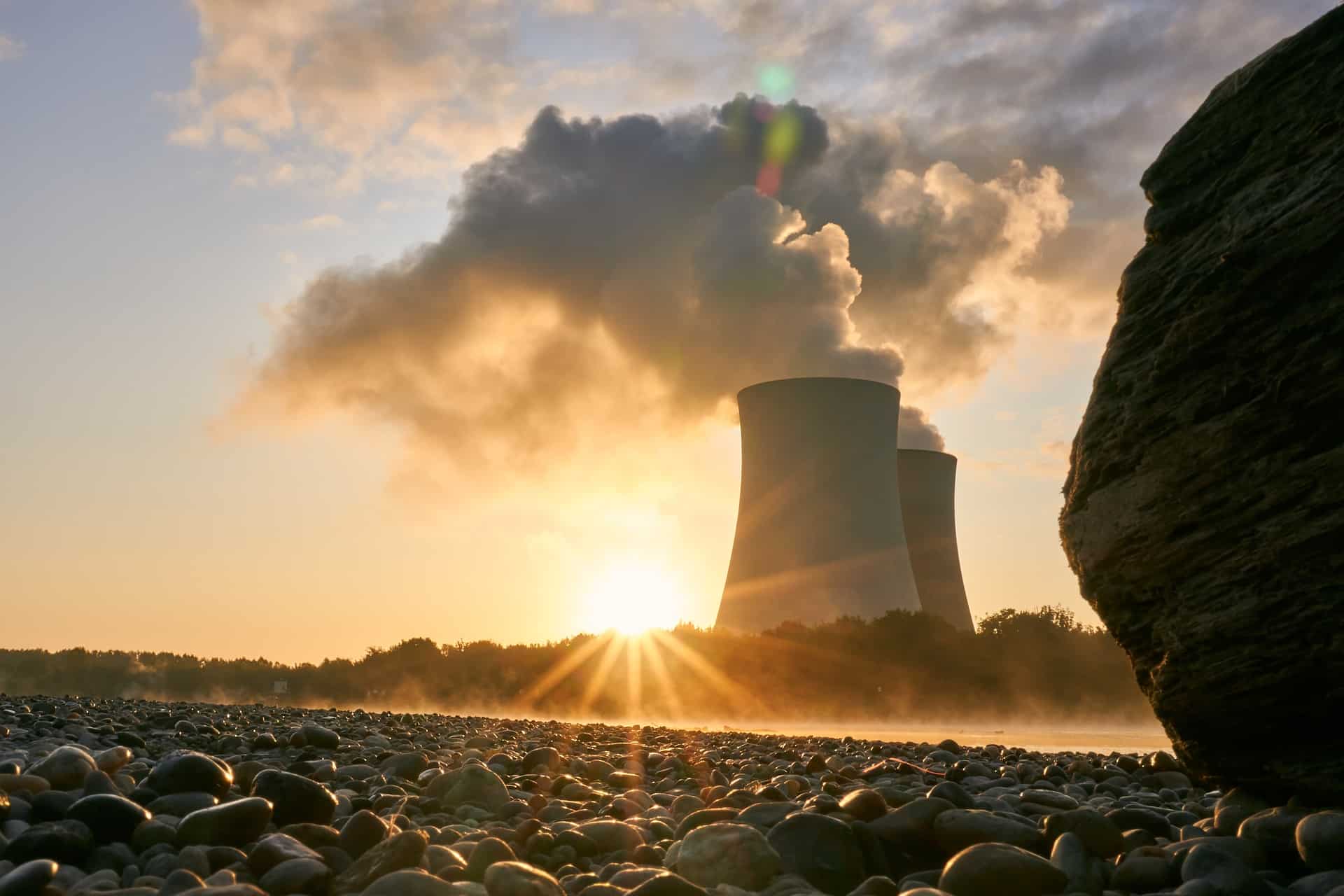

Simple coils, complex magnetic fields
“For nuclear fusion to take place, you need a strong, complex and accurate magnetic field. At Renaissance Fusion, we want to show that simple coils can also generate complex magnetic fields,” explains Simon Belka, chief movement builder at the start-up. “We build coils by depositing superconducting material on cylinders and we shape the current path by using a laser engraving technique. In a way, we transform a 3D problem into a 2D problem, which makes it seven times faster.”
To do so, Renaissance Fusion uses second-generation superconductors. Belka: “These materials allow to circulate very high current when cooled down below 77K, thus creating very strong magnetic fields. By doubling the magnetic field, we can reduce the size of the reactor by a factor four. This will make the reactor cheaper and easier to manufacture. Our magnet technology also allows better confinement which is key achieve the efficiency needed for commercial fusion.”
“For nuclear fusion to take place, you need a strong, complex and accurate magnetic field. At Renaissance Fusion, we want to show that simple coils can also generate complex magnetic fields.”
Simon Belka
Liquid walls
The other key technology is liquid shields. These are designed to protect the reactor walls from the hot plasma and absorb the neutrons produced during the fusion reaction. The walls consist of a stream of liquid metal, lithium, and act like a shield between the plasma and solid walls of the reactor. This approach is expected to reduce the level of radioactivity in the reactor significantly.
By absorbing 99 percent of the neutrons, the shields prevent the neutrons from contaminating the material around the reactor. Moreover, lithium does not become radioactive and also absorbs the heat of the reaction, making it easier to control. An additional advantage is that lithium, when it collides with a neutron, generates tritium, one of the two fuels of the fusion reaction, regenerating 50 percent of the fuel needed.
Step by step
It sounds good, but the Technology Readiness Level (TRL) is still low. The first step is to successfully demonstrate the two core technologies (controlling the neutrons with liquid walls and using a new generation of superconductors that generate a strong magnetic field). “Once that is successful, we want to build a prototype reactor that will show that our concept produces more energy than it costs,” he says. The final step is to realize a commercial Stellarator reactor. That should be finished by the 2030s,” Belka says. The French company does not plan to operate the reactors itself but wants to sell them.
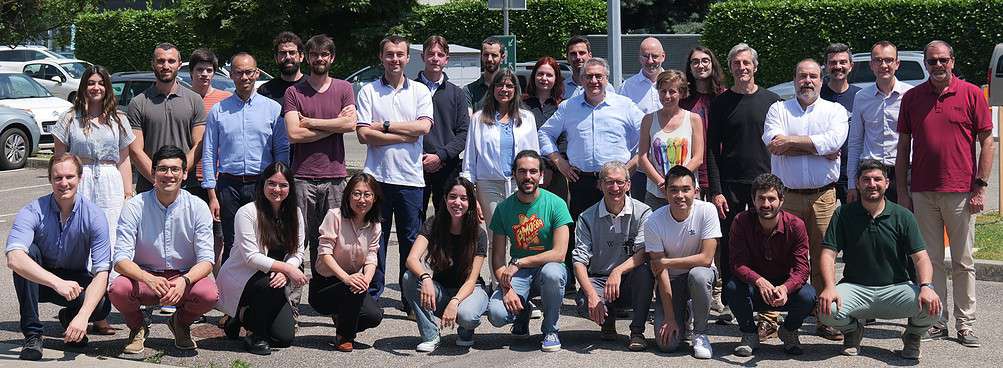
Making a difference
It has been a year and a half since Belka joined founder Francesco Volpe’s company for good, but unofficially, he has been involved since Renaissance Fusion was founded in 2019. Belka looks back on a hectic time. “It is very intense; I am doing a lot of new things: pitching, appointments with high authorities. In the industry, everything follows roadmaps and procedures. In a start-up, there is much more uncertainty, which requires a different approach.”
After 15 years of working as a project manager in the aviation and automotive industries, Belka wanted to do something where he could really make a difference. “We want to tackle the energy problem and decarbonize energy production with a new generation of nuclear power. The fact that I can contribute to that now makes all the hectic and uncertain work worth it.”
The challenges – funding (to develop the technology, the start-up needs billions), finding talent, and legislation lagging – are similar to those faced by the average deep-tech start-up. On top of that, because technology is so young and has yet to prove itself, it often feels like a race against time. Currently, there are around 40 start-ups working on achieving commercial fusion. All are targeting a functioning reactor in the new 30s. Belka: “We are now at a point where we feel there are too many of us. Somehow, this diversity is a good thing. We are not all following the same path; it is good that multiple options are being explored. But there is also no point in all of us inventing the wheel. All want to be first; it’s a great motivation.”
